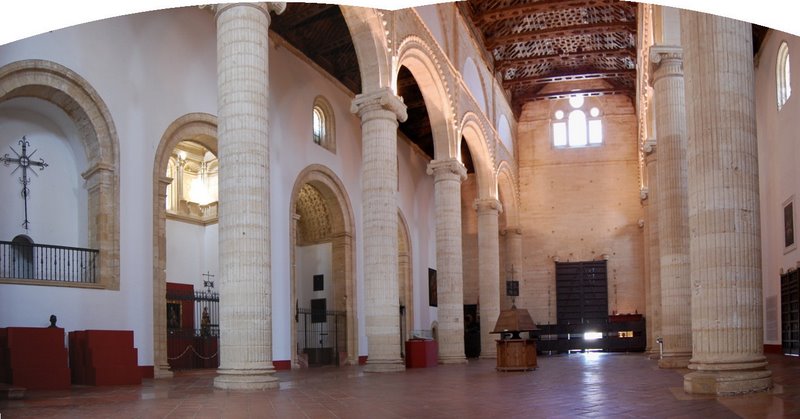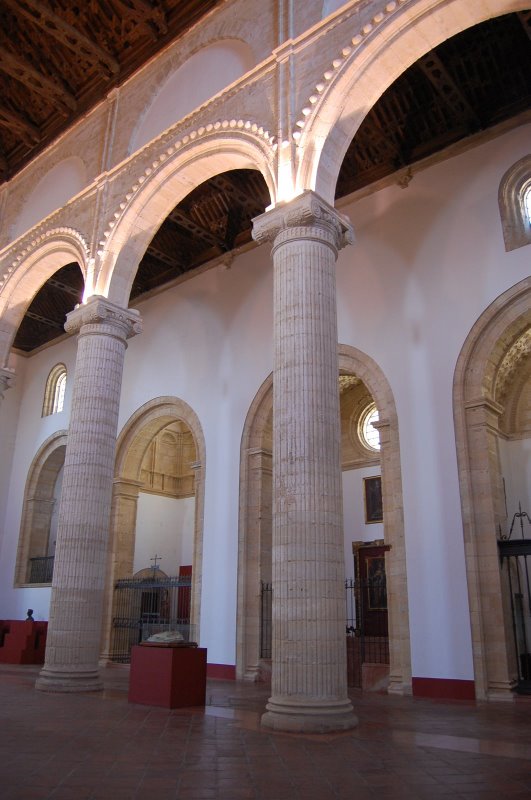Cathedrals have clerical
members called canons that have special rights and duties. Collegiates
have the same -- but are not attached to the bishop. Instead a
Collegiate is created and disbanded only by the pope. Typically
Collegiates served as centers of learning (since medieval societies had
so few who were educated, they would congregate in institutions such as
these.) It was a big deal for a town to get a Collegiate.
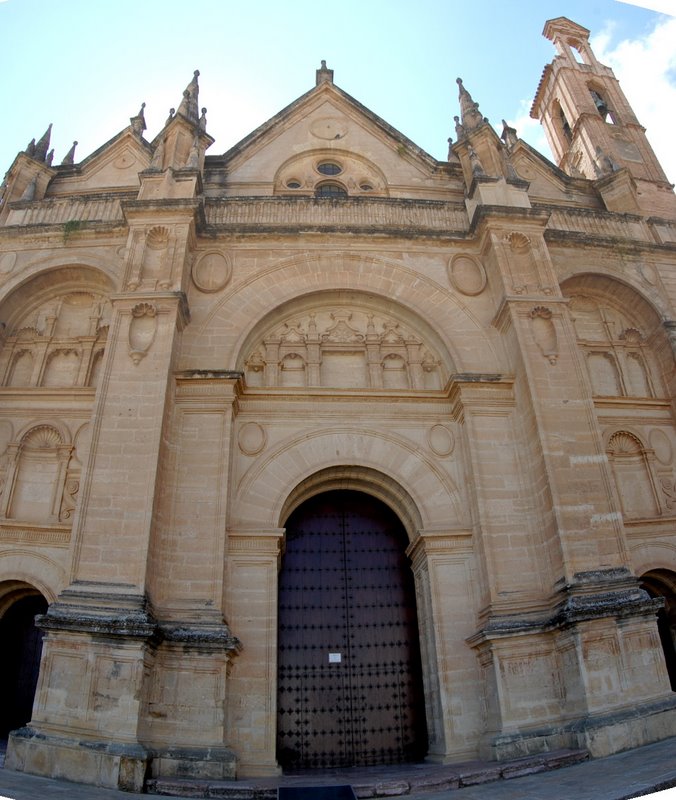
A plethora of arches
In the top picture, note that
we have 3 more Roman arches here, embedded into the front of
this 3-nave building. (The center arch is lower but than the sides but
its door is much more grand). At top we have some Venetian Gothic
pinnacles. A bit of architectural transition is going on here. (Pretend
you don’t see that asymmetrical steeple for now).
Let's get closer to the Royal Collegiate Church of Santa
Maria la
Mayor, built from 1515-1550, a century after the Christians had driven
the Moors out of Antequera but only a few decades after their final
expulsion from nearby Granada. This building was designed by
"arch"-itect Pedro del Campo and was one of the first Renaissance
churches in Spain in the "columnar Andalusian" style (despite its
Gothic pinnacles.) Note that the reliefs within these arches are arches
themselves. Some of the stones from this facade were recycled from
Roman ruins. However, the tower threatened the Renaissance symmetry
when it was added in the 17th century. What were they thinking?
A sparse interior
Inside the collegiate, eclecticism runs rampant: Ionic columns support
a Mudejar ceiling and separate Roman-arched naves. Late September light
streams into this nearly emptied space, making it the antithesis of the
dark-interiored Gothic cathedrals which came before. Today this large
room hosts concerts and lectures where once clerics sang vespers. (In
1692, the Collegiate as an institution moved down the hill to San
Sebastian church which we'll explore on an upcoming page.)
Plenty of arches here lead to recessed chapels.
Faith afloat
Oh no, you're thinking: another float with a statue of Mary. But now
for something completely different! True, most old Andalusian churches
store floats to be carried in fiesta parades. But many of those are
medieval or Baroque sculptures in silver or gold. Instead, here we have
a modern recreation of a 1760 float of a lady on a castle (signifying
her invulnerability) riding on a seven-headed monster.
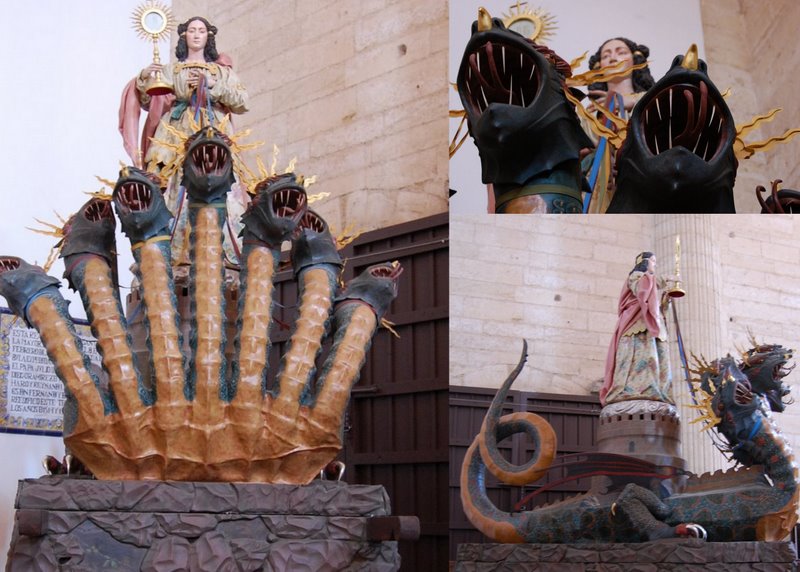
It's called a "Tarasca" -- half serpent, half lady. (Most guys have had
dates like that but would rather talk about football.) In some cities,
it is the traditional first float in the procession for the feast of
Corpus Christi going all the way back to the Baroque period. Such
parades would be lead by the image of a monster -- often ridden by a
woman who represented faith, and its ability to defeat monstrous sins.
This Tarasca lady carries a monstrance, the traditional display in
Catholic churches of the Eucharistic host (the Corpus Christi). The
monster has seven heads to represent, of course, seven deadly sins.
Quiz of the day: how many of these sins can you name without running to
Wikipedia?
According to a Wiki-ed source, the seven deadly sins are: lust,
gluttony, greed, sloth, wrath, envy, and the excessive checking of
pseudo facts online.
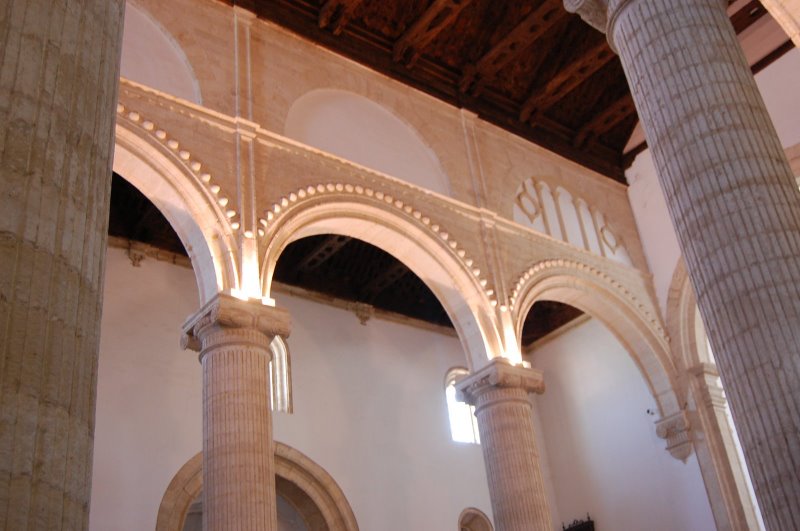 |
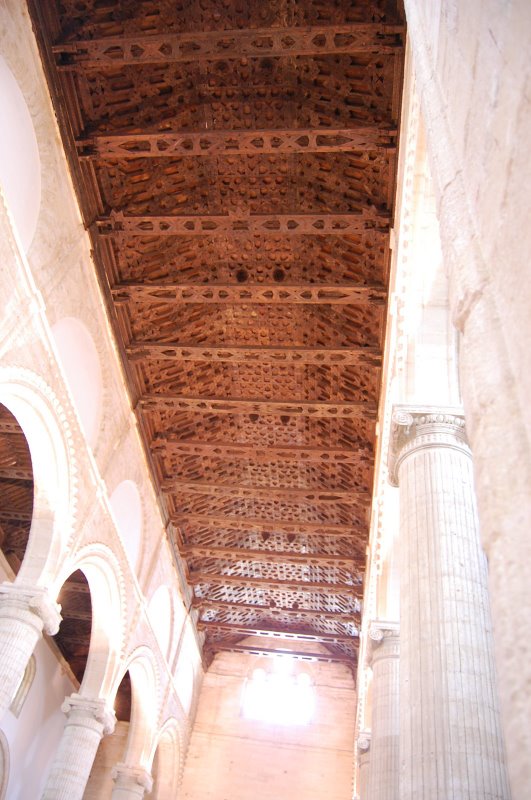 |
Note here the upper balconies contain blind arches.
A Mudejar ceiling
Above right is a neck-breaking shot of the 16th century Mudejar
ceiling. Around
the time this was built, the Moors were allowed to stay in Spain as
long as they converted to Christianity. This left a lot of skilled
craftsmen to help rebuild the Granada area with fusion
Christian/Mudejar churches. Unfortunately, they were eventually
expelled.
Simple altar
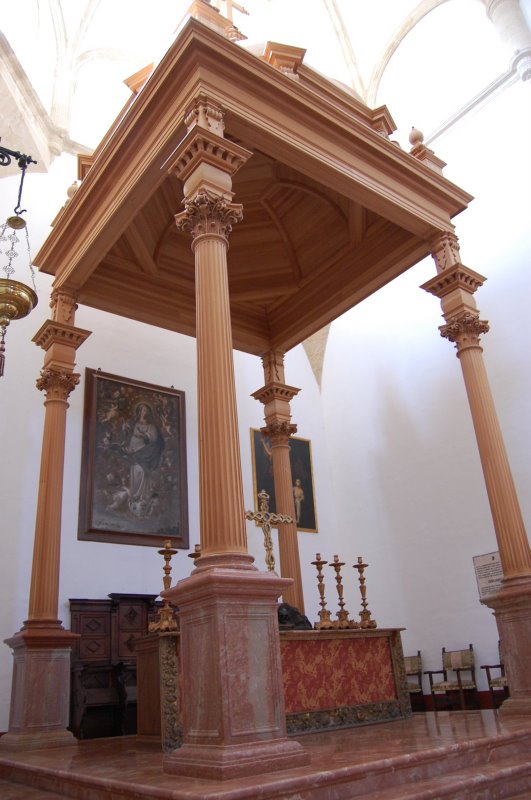
The altar area is quite simple and, because it is a museum, relatively
unadorned of most liturgical accouterments except for the Crucifix and
candlesticks. Here the columns are Corinthian and the overall feel is
one of neo-classic restraint.
Plaza de
Escribanos 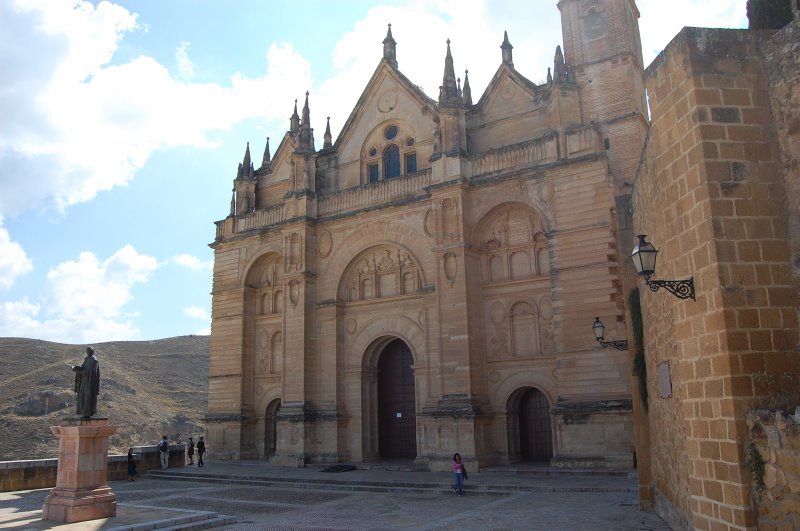
Let's take one last look at the first picture at the top of this page.
In it,
the
Roman bath ruins will be on our left. As the one-time center for
learning in Antequera, this building and its patio -- called the Plaza
de Escribanos (Square of the Writers) -- is a fitting place for a
statue (left) of Pedro de Espinosa.
Espinosa was a Baroque poet (you can imagine how flowery his language
would be) who anthologized the great poets of his day (around 1500).
He's early in the Golden Age of Spanish Literature (1500-1650). Over
the fenced precipice at left are the ruins of the Roman baths.
Join us there to
explore more of the Collegiate plaza area including the Alcazaba fort
by clicking here.
Please join us in the following slide show to give
Antequera the viewing it deserves by clicking here.
|
|
|
|
Geek and Legal Stuff
Please allow JavaScript to enable word definitions.
This page has been tested in Internet
Explorer 7.0 and Firefox 3.0.
Created on January 15, 2009
|
 |
TIP: DoubleClick
on
any word to see its definition. Warning: you may need to
enable javascript or allow blocked content (for this page only).
TIP: Click on
any picture to see it full size. PC users, push F11 to see
it even larger.
<


